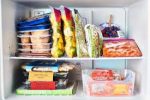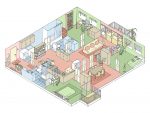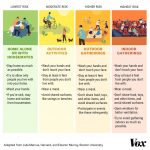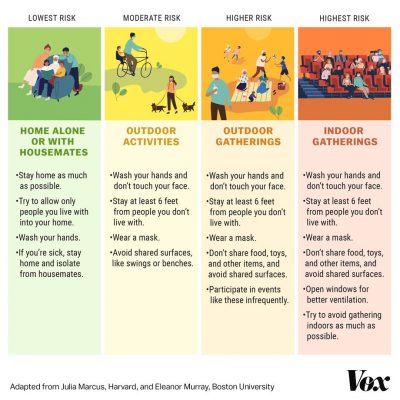2021 Hurricane Preparedness Guide

|
|
|
|
|
|
|
|
|

Serving South Florida


|
|
|
|
|
|
|
|
|
Filed under: Blog, Exclusive Buyer Agency, Exclusive Buyer Agent, First Time Homebuyers, Flood Insurance, Florida Real Estate, Home Buyer Advice, Home Buyers, Home Maintenance, home safety, Homebuyer Advice, Homeowners Insurance, Hurricane Preparedness, International Home Buyers, Real Estate, Real Estate Investment, real estate news, Real estate trends, South Florida Real Estate, Uncategorized by Kim Bregman
Comments Off on 2021 Hurricane Preparedness Guide


Design trends for 2021 include multi-zone kitchens, upgraded lighting, and oversized rectangle tiles according to home design website Houzz. The online resource recently released the following trends it expects to get hotter in 2021 as well as other home design sources.
Sconce lighting. Interest is growing in swing-arm and other sconce fixtures. Besides adding to decor, sconces have the benefit of adding task lighting around a sink or range
The multi-zone kitchen. Kitchens traditionally use a three-zone “work triangle” setup with a connection between the fridge, sink, and range, Houzz notes. More homeowners are adding touch points and creating additional work zones. Houzz refers to the trend as a “work trapezoid,” which might include dedicated areas for baking, prepping and chopping, or separate stations for snacks, drinks, and homework.
Rejuvenating bathroom design. Bathrooms are being designed to help reduce stress. Forty-one percent of homeowners who have undergone a bathroom renovation say they wanted their new space to evoke more of a relaxing vibe and adding steam showers, aromatherapy shower heads, and bathtub fillers that can hold a cup of tea or glass of wine.
Oversized rectangle tile. Large rectangular tiles can help visually expand a small space, and fewer grout lines means less cleaning. Houzz says the larger tiles are being used in several classic patterns, such as herringbone, stacked, and brick. Houzz designers recommend using a matte finish on bathroom floor tiles to reduce slipperiness.
Browns and beiges return. “Warm taupes, beiges, sands—basically any earth tone is surging in popularity,” Houzz notes. “Some designers say the trend is an evolution from popular whites and grays of recent years and that brown as an accent color works well to bring warmth to a palette heavy with those colors.”
Home offices and nooks. Homeowners are creating efficient spaces for offices, work nooks, and even backyard cottages as remote work grows and likely remains elevated in 2021.
Video conference-worthy backgrounds. Homeowners are feeling the need to have an aesthetically pleasing background for their video meetings and are even converting living rooms into video conferencing rooms with large screens and improved lighting and audio equipment.
Open floor plan scrutiny. “Perhaps no other design element was put under the microscope this year more than the open plan,” Houzz reports. “Anyone who had multiple family members attempting concurring video meetings in an open layout quickly saw the disadvantages to a lack of walls.” While this trendy floor plan isn’t likely to go away, many homeowners are considering sliding doors or partitions that can close off rooms for privacy.
Pergolas. To extend usable living space, homeowners are turning their attention to the outdoors. These structures can add shade for dining, lounging, and other outdoor activities.
Backyard cottages and ADUs. For more privacy, some homeowners are adding a dedicated area to their backyard that’s separate from their main home. Accessory Dwelling Units ( ADU) are standalone structures are used as home offices, gyms, meditation areas, or extended living spaces to house relatives or kids who had to stay home from college due to the pandemic. No need for an architect, there are numerous sources that offer pre-fabircated sheds for multiple purposes from gardening to “sanity sheds”.
New multifamily amenities. With gyms, pools, and communal kitchens in multifamily buildings now periodically closing to keep residents safe, new spaces—indoors and outdoors—are emerging that are designed for fewer occupants such as
Resilient landscapes. Due to greater weather volatility, landscaping needs to better handle heavy rains and flooding, snowstorms, and drought. Multifamily waterfront communities are being designed or retrofitted with strategic landscaping and elevated public use area to address shifting shorelines and storm surges.
Health-minded building certifications. The latest generation of certifications, rating systems, and design standards is based on scientific and medical research that affects human and occupant health such as programs like the WELL Building Standard, from the International WELL Building Institute, and Fitwel, according to the BuildingGreen site. Both suggest ways to gain a variety of benefits, from extensive natural daylight to good indoor air quality, filtration, and low energy use. Unlike LEED, these programs consider emotional wellness, too, which translates into greenery, gardens, and other biophilic design elements.
There are plenty of reasons to look forward to 2021, especially when it comes to the home design. After a year that guided many of us to spend more time at home, the new year is an opportunity to bring comfort and creativity to our living spaces.
Filed under: Blog, Boca Raton real estate, coronavirus, COVID-19, Down Sizing, Exclusive Buyer Agent, First Time Homebuyers, Florida Real Estate, Home Buyer Advice, Home Buyers, Home decorating, home safety, Homebuyer Advice, Interior Design, Real Estate, Real Estate Investment, real estate news, Real estate trends, South Florida Real Estate by Kim Bregman
Comments Off on Housing and Interior Design Trends for 2021


As the coronavirus spreads, people across the world are preparing for the possibility of forced quarantines, and shutdowns of businesses and services. Keeping fruits, vegies and meats stocked in your refrigerator is not a practical idea if you are going to be in a mandatory lockdown or just want to limit your trips to the store for your own personal safety.
Freezing can extend the shelf-life of a huge variety of foods. You can stock up on frozen items right from the store, but if supplies are running low, it’s just as good to pop your own perishables in the freezer.
Berries, mango, peaches, cherries freeze well, as do bananas. They can all make for a convenient smoothie or, slightly thawed, a sweet treat. For veggies: corn, peas, and green beans, spinach, peppers, and onions are all good options. Avocados can also be frozen in chunks when they’re ready to eat. The key is to freeze things before they start to get overly ripe.
A lot of prepared foods are perfect for freezing, such as sliced bread, soups, lasagna, grilled chicken breast, sandwich meat and cooked rice — so consider cooking big dishes that can be portioned into single servings to freeze, then eat on the go. Not just cooked meat, but any raw meat, including chicken pieces, ground beef, steak, bacon and pork can all be thrown into the freezer and thawed to cook at a later date. Many people don’t think to freeze items like milk, cream, or yogurt, because the consistency of these items can change dramatically when frozen. However, they’ll keep longer, and can be used in sauces, soups and other recipes where the texture won’t matter.
Avoid freezer burn
Always freeze food once it has cooled down, not while it’s still hot. Make sure you get as much air out of your storage container as possible and seal tightly to prevent air from getting in and causing freezer burn.
If you are freezing leftovers, wrap them in foil first for extra protection before putting them into a zip-top plastic bag. A vacuum sealer to suck all the air out helps food last just a little bit longer.
Organize your freezer space
You should have a variety of foods in your freezer. Label foods and date them so that you can use the first in, first out system of consumption.
Freeze in appropriate portions. Consider what one serving would be like and freeze in portions that make sense for your use. If you are cooking for a family or a friend’s family, adjust sizes accordingly.
Make an extra batch of whatever you cook for a freezer meal. If you are making meatballs or lasagna, it’s much easier to double the recipe than to have to make it again just to freeze. Eat one now and freeze one for later.
Soups and chilis freeze very well and heat up quickly. Freeze a portion or two each time you make soup and you’ll have a great variety later on.
Don’t discount breakfast. Muffins, breakfast burritos, even banana bread (just slice before freezing) make great additions to the freezer.
A little treat. Cookie dough can often be frozen, and you’ll be able to throw a fresh batch of cookies into the oven quickly.
Filed under: Blog, coronavirus, COVID-19, Exclusive Buyer Agency, Exclusive Buyer Agent, First Time Homebuyers, Florida Real Estate, Home Buyer Advice, Home Buyers, Home Maintenance, home safety, Homebuyer Advice, Real Estate, real estate news, South Florida Real Estate by Kim Bregman
Comments Off on Stocking the Freezer During to Prepare for a Lock Down



Filed under: Blog, Boca Raton real estate, coronavirus, COVID-19, Exclusive Buyer Agency, Exclusive Buyer Agent, First Time Homebuyers, Florida Real Estate, Home Buyer Advice, Home Buyers, Home decorating, Home Maintenance, home safety, Homebuyer Advice, Interior Design, Real Estate, Real Estate Investment, real estate news, Real estate trends, South Florida Real Estate, What Buyers Should Check When Buying an Older Home by Kim Bregman
Comments Off on What We Need From A Home During COVID-19 Pandemic


Filed under: Blog, Boca Raton real estate, Exclusive Buyer Agency, Exclusive Buyer Agent, First Time Homebuyers, Florida Real Estate, Home Buyer Advice, Home Buyers, Home decorating, Home Maintenance, home safety, Homebuyer Advice, Interior Design, Real Estate, Real Estate Investment, real estate news, Real estate trends, South Florida Real Estate by Kim Bregman
Comments Off on Ways Smart Home Technology Can Save You Money!



Filed under: Blog, Boca Raton real estate, coronavirus, COVID-19, Exclusive Buyer Agency, Exclusive Buyer Agent, First Time Homebuyers, Florida Real Estate, Home Buyer Advice, Home Buyers, home safety, Homebuyer Advice, House Closings, Real Estate, Real Estate Closings, Real Estate Investment, real estate news, Relocation, South Florida Real Estate by Kim Bregman
Comments Off on Keeping Home Buyers Safe During COVID-19 Pandemic


Our living spaces greatly influence our physical health – as well as our emotional state of mind (especially during his time). So it will continue to be important to create environments that stimulate our senses in a good way, improve relaxation, and have health and wellness benefits to the people using them. Here are a few ways of living that will be popular.
When it comes to colors this year, we’re seeing the return of earth tones in a wide spectrum, from cream to terra cotta. Expect to see decor that conveys softness, with plenty of light colors, especially pinks, beiges and other neutral tones, for a Zen look promoting rest, tranquility and well-being.
Nature continues its influential role in the world of decor. Vegetal hues have been in the spotlight for several seasons now, and this year we saw a lot of them, ranging from tender green to intense mint to peacock blue. Sky blue has brightened up the pastel palette.
Earth tones aren’t the only trend with staying power of late. While black is becoming less popular, blue has been replacing it. It’s a more versatile and emotionally indulgent hue well suited to sheltering at home.
Filed under: Blog, Boca Raton real estate, coronavirus, COVID-19, Down Sizing, Exclusive Buyer Agency, Exclusive Buyer Agent, First Time Homebuyers, Florida Real Estate, Home Buyer Advice, Home Buyers, Home decorating, home safety, Homebuyer Advice, Interior Design, Real Estate, Real Estate Investment, real estate news, Real estate trends, South Florida Real Estate by Kim Bregman
Comments Off on Life After COVID-19? How Interior Design will Change


Emergency Supplies that you can buy now and be prepared for any emergency in the next few months. COVID-19 cases are increasing and there may be a need for you to self-quarantine for a period of weeks. We are also in the summer months frequently occurring natural disasters—a flood, hurricane, tornado, fires, and more—and they often come with little or no warning. There are already known shortages of items in the stores and with the onset of a hurricane warming the shelves will soon be bare. Stocking up now on the right non-perishable food items will help you weather the storm (or global pandemic) with less stress knowing that you have these emergency supplies on hand for now or later.
What to Always Keep in Your Pantry
These non-perishable food items (or close to it) have lengthy expiration dates, so you can stash them away for long periods of time, even if it’s not hurricane season or tornado season. Make a list of everything in your stockpile and check expiration dates every 6 to 12 months to keep things fresh. And don’t forget to have a MANUAL can opener on hand at all times—all that food won’t be of any use if you can’t open it.
Peanut butter: A great source of energy, peanut butter is chock-full of healthful fats and protein. Unless the jar indicates otherwise, you don’t have to refrigerate after opening.
Whole-wheat crackers: Crackers are a good replacement for bread and make a fine substitute when making sandwiches.
Nuts and trail mixes; Stock up on these high-energy foods—they’re healthful and convenient for snacking during a hurricane, tornado, or other emergency.
Cereal;Choose multigrain cereals that are individually packaged so they don’t become stale after opening.
Granola bars and power bars;Healthy and filling, these portable snacks usually stay fresh for at least six months.
Dried fruits, such as apricots and raisins;In the absence of fresh fruit, these healthy snacks offer potassium and dietary fiber.
Canned tuna, salmon, chicken, or turkey;Generally lasting at least two years in the pantry, canned meats provide essential protein. Vacuum-packed pouches have a shorter shelf life but will last at least six months.
Canned vegetables, such as green beans, carrots, and peas;When the real deal isn’t an option, canned varieties can provide you with essential nutrients, making these a great hurricane food or natural disaster
Canned soups and chili; Soups and chili can be eaten straight out of the can and provide a variety of nutrients. Look for low-sodium options.
Dry pasta and pasta sauces; It might be a carb-heavy, gluten-full food, but pasta is filling, and dry pasta and jarred sauce can last on pantry shelves for months
Bottled water; You need at least one gallon per person per day. “A normally active person should drink at least a half gallon of water each day,” Andress says. “The other half gallon is for adding to food and washing.”
Sports drinks;The electrolytes and carbohydrates in these drinks will help you rehydrate and replenish fluid when water is scarce. Just make sure your sports drink of choice doesn’t come with too many additives, such as sugar or artificial sweeteners.
Powdered milk or Boxed milk; Almost all dairy products require refrigeration, so stock this substitute for an excellent source of calcium and vitamin D when fresh milk isn’t an option.
Sugar, salt, and pepper;If you have access to a propane or charcoal stove, you may be doing some cooking. A basic supply of seasonings and sweeteners will improve the flavor of your food, both fresh and packaged.
Multivitamins;Supplements will help replace the nutrients you would have consumed on a normal diet.
What to Buy Right Before an Emergency
If you’ve been given ample warning that a storm is coming, there’s still time to run to the market and pick up more hurricane food: fresh produce and other items that have shorter shelf lives. Most of these foods will last at least a week after they’ve been purchased and will give you a fresh alternative to all that packaged food..
Apples;Apples last up to three months when stored in a cool, dry area away from more perishable fruits (like bananas), which could cause them to ripen more quickly.
Citrus fruits, such as oranges and grapefruits;Because of their high acid content and sturdy skins, citrus fruits can last for up to two weeks without refrigeration
Avocados;If you buy an unripe, firm avocado, it will last outside the refrigerator for at least a week.
Tomatoes;If you buy them unripe, tomatoes will last several days at room temperature.
Potatoes, sweet potatoes, and yams;If you have access to a working stove, these root vegetables are good keepers and make tasty side dishes. Stored in a cool, dark area, potatoes will last about a month.
Cucumbers and summer squash;These vegetables will last a few days outside of refrigeration and can be eaten raw.
Winter squash:While most are inedible uncooked, winter squashes, such as acorn squash, will keep for a few months. If you’ll be able to cook during the emergency, stockpile a bunch.
Hard, packaged sausages, such as sopressata and pepperoni; You can’t eat canned tuna and chicken forever. Try stocking up on a few packages of dry-cured salamis such as sopressata, a southern Italian specialty available at most grocery stores. Unopened, they will keep for up to six weeks in the pantry.
Non-grocery Items:
Within the two-week limit, make sure you have enough toothpaste, floss, face wash, moisturizer, shampoo, conditioner, razors, shaving cream and hand sanitizer with at least 60% alcohol. It’s also good to have extra laundry detergent and hand soap at home. Stock up on face masks, hand sanitizers, toilet paper
More Food Advice for an Emergency:
Filed under: Blog, Boca Raton real estate, coronavirus, COVID-19, Exclusive Buyer Agency, Florida Real Estate, Home Buyer Advice, Home Buyers, Home Maintenance, home safety, Homebuyer Advice, Hurricane Preparedness, South Florida Real Estate, Uncategorized by Kim Bregman
Comments Off on Emergency Supplies for Quarantine or Hurricane


  Since COVID-19 lock downs began in the US, most Americans have drastically changed their patterns: following instructions to stay home, limiting almost all contact with others, and venturing out only for essential trips and exercise. Americans are getting tired of staying inside. All states have re-opened at different levels. As states begin to ease social distancing restrictions, people are beginning to have more options. Between those wanting to patronize newly reopened businesses or socialize in person, and more employers calling people back to work. The safest thing anyone can do in the middle of the Covid-19 outbreak is still the same as it was a few months ago: Stay home as much as possible to avoid catching or spreading the virus until there is a vaccine or effective treatment, or until the pandemic otherwise ends. That especially applies to people who are sick, who should do all they can to avoid exposing others to the coronavirus. But for many people, it’s really not clear which kinds of gatherings are safe and which aren’t. And that uncertainty can spark anxiety. Fortunately, health experts know more about the COVID-19 than they did when the lock downs began, and they can point us to different levels of risk as we begin to reengage. First and foremost, the advice that has been repeated for much of the past few months remains true: Your home is still the safest place to be during this pandemic. You should continue trying to stay home as much as possible, because the virus is still circulating at a very high rate in many communities. But whether you need to for work or you’re simply tired of looking at your home’s walls, there are ways to mitigate risk when you go out. if you want to do something outside your home, it’s better to take advantage of the fresh air and do it outdoors rather than indoors when possible. If you want to meet with certain friends or family, consider a pact with them in which you’ll both agree to minimize or eliminate contact with anyone else, to reduce overall exposure for everyone involved. The most important thing: Avoid indoor spaces that bring you within 6 feet of people from outside your household for long periods. “It is about density. It is about duration of contact,” according to Cyrus Shahpar, a director at Resolve to Save Lives. So if you’re having friends over, consider hanging out outside (and keep it to a small group). If you want to eat at a restaurant, look for outdoor seating. If you’re going for a run, go to the park, beach, or streets instead of the gym. After some mixed messaging from federal officials early on in the COVID-19 outbreak, there is widespread consensus that people should wear masks when they go out — a surgical or medical mask if they have one, a cloth one if they don’t. The Centers for Disease Control and Prevention recommends masks “in public settings where other social distancing measures are difficult to maintain (e.g., grocery stores and pharmacies), especially in areas of significant community-based transmission.” But other experts — and, in some cases, government mandates — go further, saying you should wear a mask in just about any setting outside your home as long as the pandemic continues. The primary reason for a mask is to stop transmission from the wearer to others, particularly from people who are infected but asymptomatic and therefore might not even know they’re infected. If you wear a mask, you’re less likely to spray virus-containing droplets on surfaces or other people when you breathe, talk, sing, laugh, sigh, snort, cough, sneeze, and whatever else you might do with your mouth and nose. One of the common pieces of advice throughout this pandemic has been to keep 6 feet or more away from people you don’t live with, summarized by the catchy slogan “6 feet distance determines our existence.” The closer you are to someone, the likelier they are to shed their coronavirus all over you, and vice versa. Whether you’re leaving your home because you have to for food or work, or you’re going out because you can’t stand the sight of your apartment anymore, one way to minimize risk is to space out all your trips. With every venture outside, you are putting yourself at risk of contracting COVID-19 in a world that’s still engulfed by a pandemic. ALWAYS wash your hands frequently, and don’t touch your face. If you’re going to frequently venture far outside your home, that advice is especially pertinent. Take hand sanitizer to use religiously and wear gloves whenever possible. Stay Safe, Stay Healthy, Stay Home Whenever Possible |
Filed under: Blog, coronavirus, COVID-19, Exclusive Buyer Agency, Exclusive Buyer Agent, Florida Real Estate, Home Buyer Advice, Home Buyers, home safety, Homebuyer Advice, Uncategorized by Kim Bregman
Comments Off on COVID-19: Weighing the Risks of Going Out


Pets are an important part of our family, and one of the bright spots in the stay-at-home mandates due to COVID-19 is that we get to spend more time with them. The pets of the world are probably delighted with that aspect of the current crisis.
Understandably, many owners have questions about their pet’s susceptibility to COVID-19 and how it might affect their personal health. Just as medical experts are learning more each day about how the new coronavirus, COVID-19, impacts the health of humans, they’re also studying its effects on animals. And what they’ve discovered is that although the virus primarily spreads from person to person, it can spread from people to pets in some situations.
A small number of pets worldwide, including cats and dogs, have tested positive for COVID-19, “mostly after close contact with people with COVID-19,” the Centers for Disease Control and Prevention (CDC) says.
Cats appear to be the most susceptible to SARS-CoV-2 and can even develop symptoms of the disease, preliminary studies show. They also seem to be able to spread the virus to other cats. (Laboratory studies have found that ferrets and golden or Syrian hamsters can spread the infection to other animals of the same species as well.)
How to protect your pets
Keeping your four-legged family members safe during the coronavirus pandemic looks a lot like how you might go about protecting the humans in your family. Physical Distancing is a key preventative measure. Public health experts recommend keeping your pet away from other people and animals outside the household.
Avoid dog parks and public spaces where dogs gather to play, and when on walks, keep your dog at least 6 feet from other people and animals. Cats should be kept indoors when possible to limit their interaction with other people and pets, the CDC advises. While you spend more time at home, try to dedicate more time to playing with your dog or cat. It’s a great time to bond, teach them new tricks or focus on behavior training.
If you or someone in your family is sick with COVID-19, avoid contact with your pets — this includes petting, snuggling and smooching. If possible, have another member of your household care for your pet while you are sick, the CDC says. Also: Be sure to wear a cloth face covering if and when you are around your pet, and don’t forget to wash your hands before and after touching any animal. This helps to keep you and your pet healthy.
Here are some key actions you can take to prepare and help ensure the safety and care of your pets in case you get sick:
If you are concerned that your pet has been exposed to the coronavirus, contact your veterinarian. Just like with people, it’s better to call first to limit the risk of exposing others to the virus.
Filed under: Blog, coronavirus, Exclusive Buyer Agency, Florida Real Estate, Home Buyer Advice, Home Buyers, home safety, Homebuyer Advice by Kim Bregman
Comments Off on Household Pets and COVID-19


All information is provided by the licensed REALTOR®/Broker/Agent. This information is not verified for authenticity or accuracy and is not guaranteed. This website is not responsible or liable in any manner for any content posted herein or in connection with our services. Information is not guaranteed and must be confirmed by the end user.
Copyright © 2024 OPTIMA PROPERTIES. All Rights Reserved. Privacy Policy | Intellectual Property Rights | Sitemap | Real Estate Website Design & Internet Marketing by Agent Image